Delegated resource only
This section will introduce the procedure of integration (Delegated resource only) with Microsoft 365. This integration is suggested for companies who have a higher security concern.
📌Some ONES functions will not be included as system can only access resource calendar but not user calendar.
Server settings
Getting start
Enter the
nameof integration for identification of this integration in ONES.Microsoft 365 service operatormainly isMicrosoft.21Vianetis for Mainland China client.
Create App registrations
For retrieving the directory ID, application ID and client secret, you need to create an application registration for integration. Navigate to your Azure Portal AAD tenant's app registrations blade.
Select
App registrationsand clickNew application registration: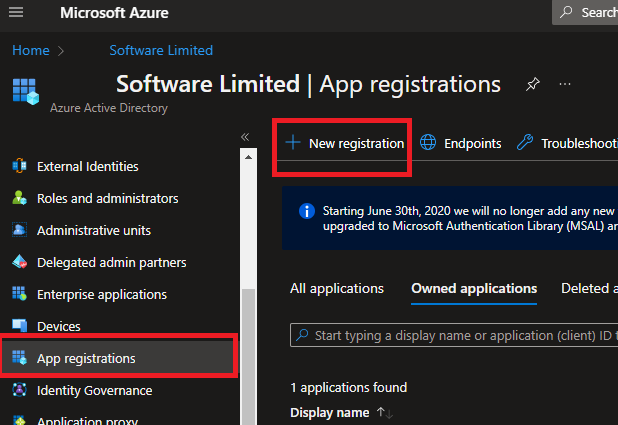
Enter a name for the app registration. (This is not important for the integration with ONES.)
Go to the
Overviewand copy the value:Client ID (Application ID)andTenant ID (Directory ID)into the corresponding fields.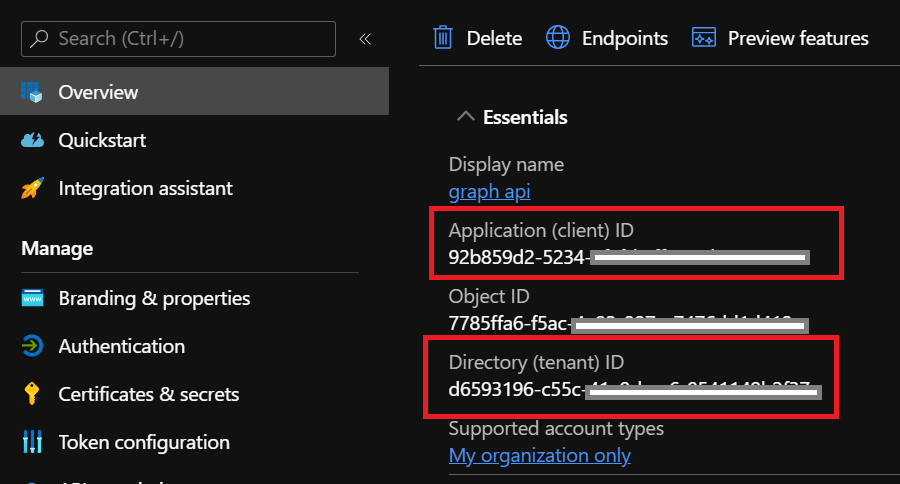
Grant API Permission
Go to
API Permissions, clickAdd a permission, selectMicrosoft Graph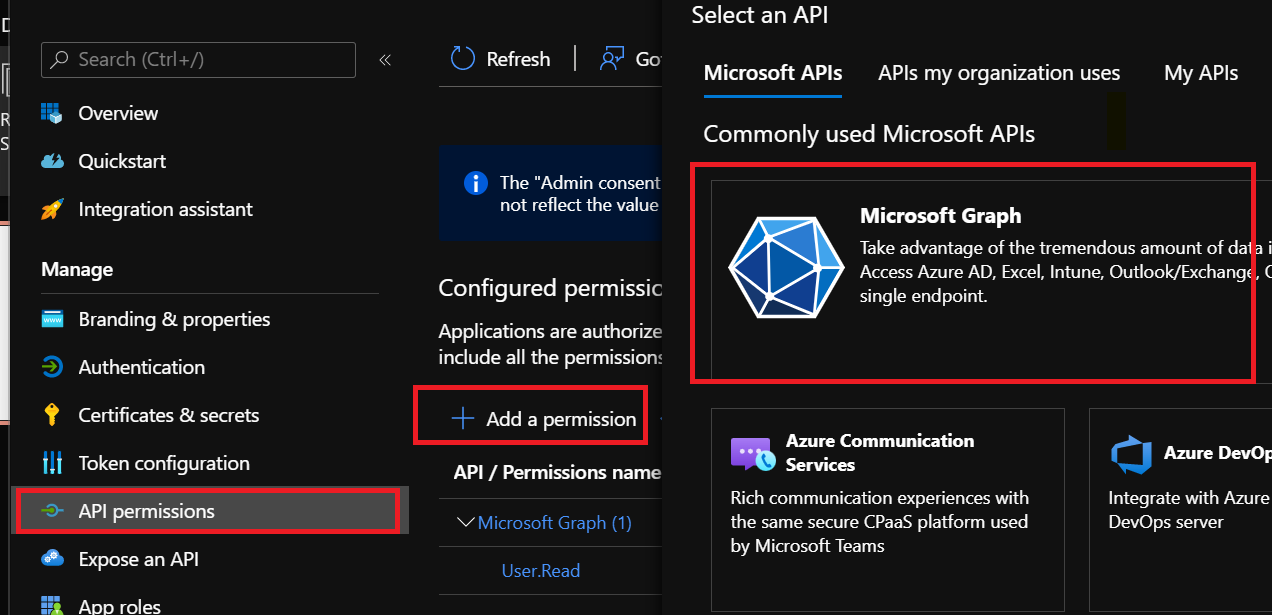
Click
Delegated permissionsSelect the following permissions in
Delegated permissionsand clickAdd permissions
Calendars -> Calendars.ReadWrite.SharedopenIdoffline_access
Create client secret
After the app registration is created, go to
Certificates & secretsSelect
Client secrets, and clickNew Client secret.Enter a name (e.g. Offision Integration) for the client secret, and select the expire time based on your needs.
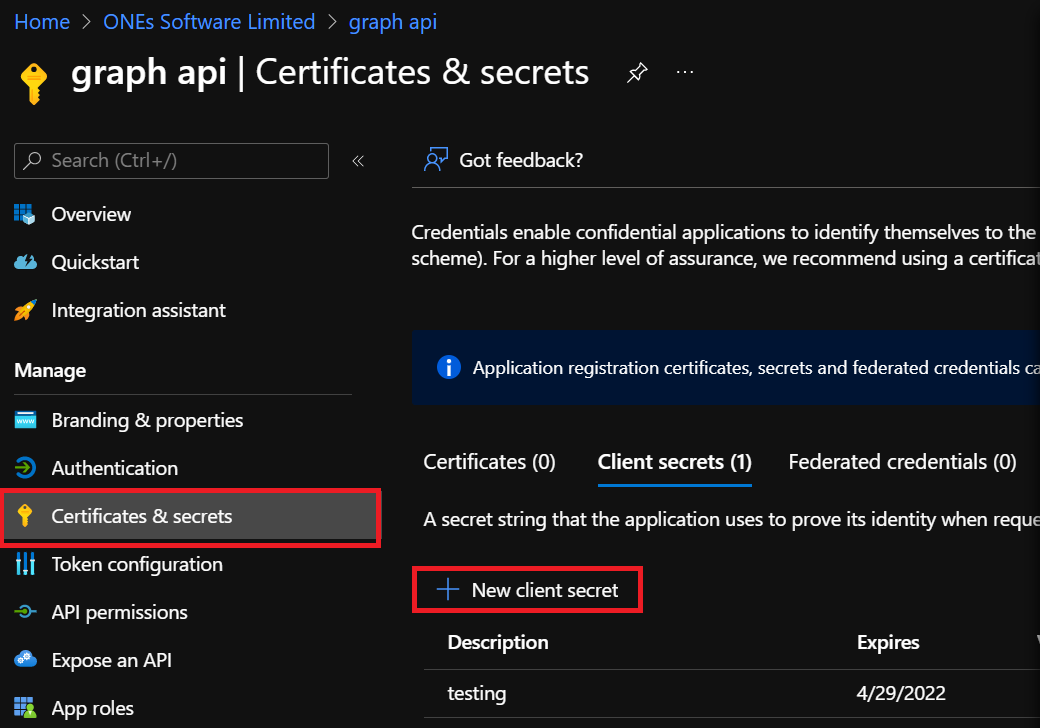
Click the
Addbutton, and you can get theClient secretimmediately after creation. Please copy it at this moment and fill in the field. Otherwise you may need to recreate a new client secret.
Save and next
- Click
Save and nextto continue once the information is confirmed to be correct.
Room settings
Redirect URI
Redirect URI is for adding single-sign-on callback-link to Microsoft 365(Please also add this to the Azure Portal):
Navigate to
Authentication, clickAdd platform, then clickWeb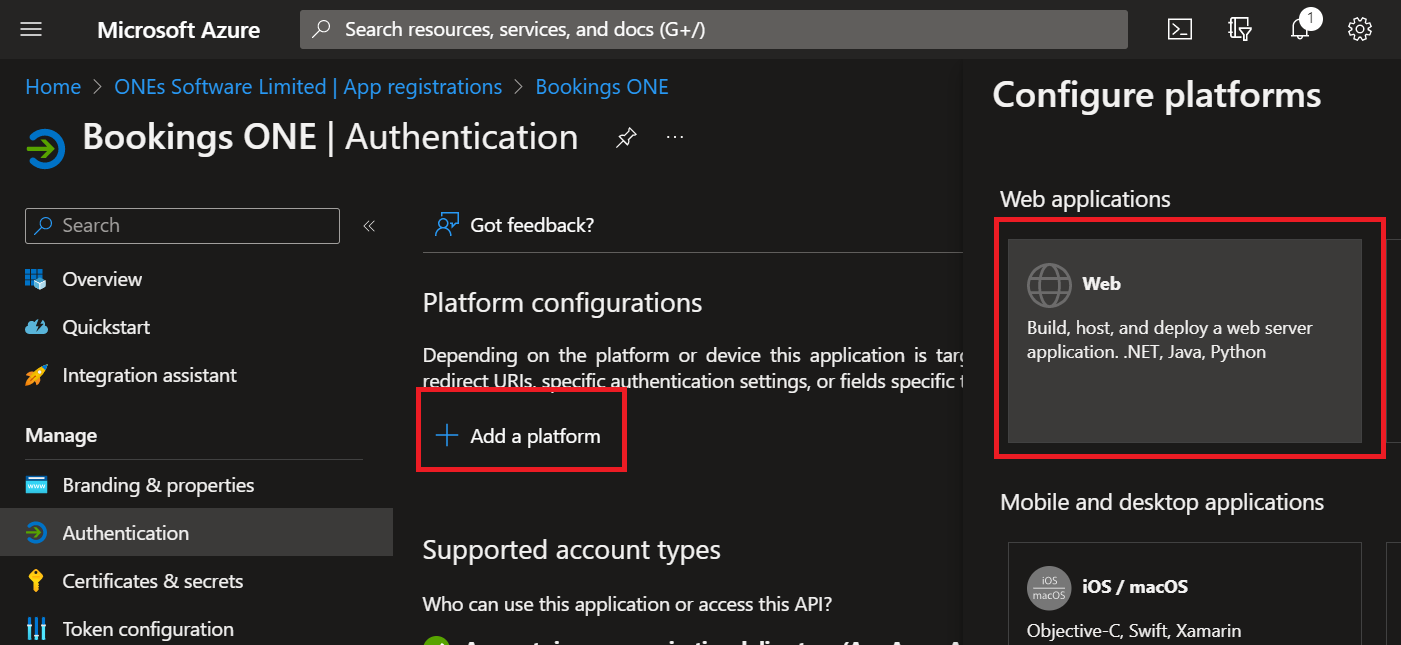
Copy the Redirect URI from the right and paste in the
Redirect URIsin the Azure Portal AAD tenant. ClickConfigure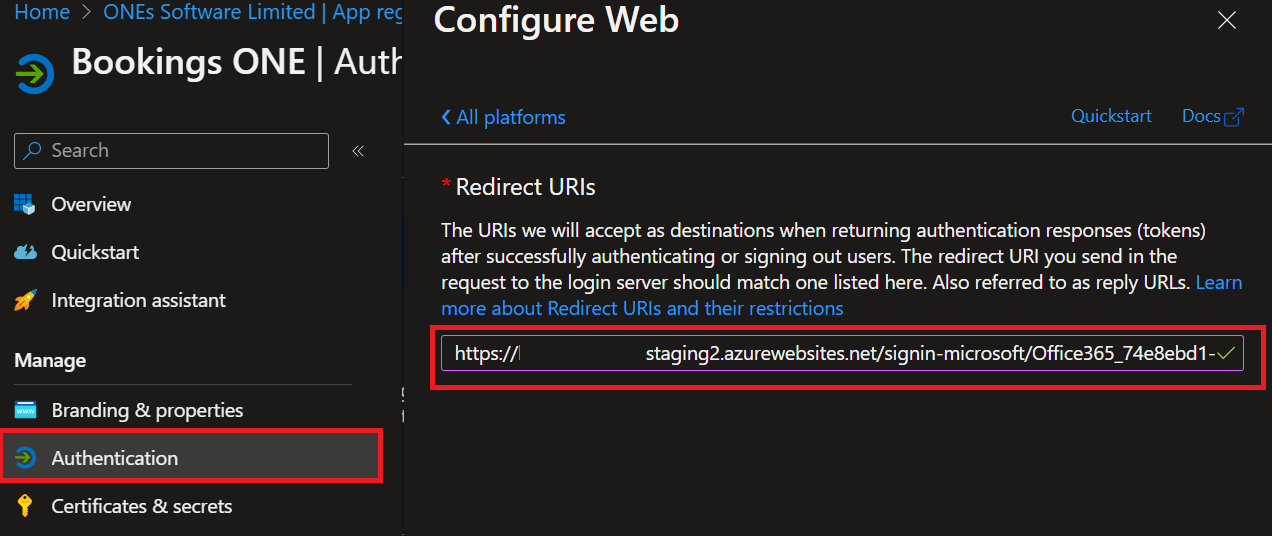
If you want to apply the Offision policy to O365 room, please click here for more information.
Save and next
- Click
Save and nextto continue.
User settings
Single sign on
For single sign on, you need to create ANOTHER application registration.
Navigate to your Azure Portal AAD tenant's app registrations blade.
Create an application registration for integration
Select
App registrationsand clickNew application registration:
Enter a name for the app registration. (This is not important for the integration with ONES.)
Go to the
Overviewand copy the value:Client ID (Application ID)into the corresponding fields.
Create client secret
After the app registration is created, go to
Certificates & secretsSelect
Client secrets, and clickNew Client secret.Enter a name (e.g. Offision Integration) for the client secret, and select the expire time based on your needs.

Click the
Addbutton, and you can get theClient secretimmediately after creation. Please copy it at this moment and fill in the field. Otherwise you may need to recreate a new client secret.
Redirect URI
Back to the setting on the right, Redirect URI is for adding single-sign-on callback-link to Microsoft 365(Please also add this to the Azure Portal).
Navigate to
Authentication, clickAdd platform, then clickWeb
Copy the Redirect URI from the right and paste in the
Redirect URIsin the Azure Portal AAD tenant. ClickConfigure
Others
You can set-up the default user groups in ONES for adding newly synchronized users.
You can select
Pagerin user account as the card number of user in ONES.You can set the
Login button namein the login page.Click
Save and close.